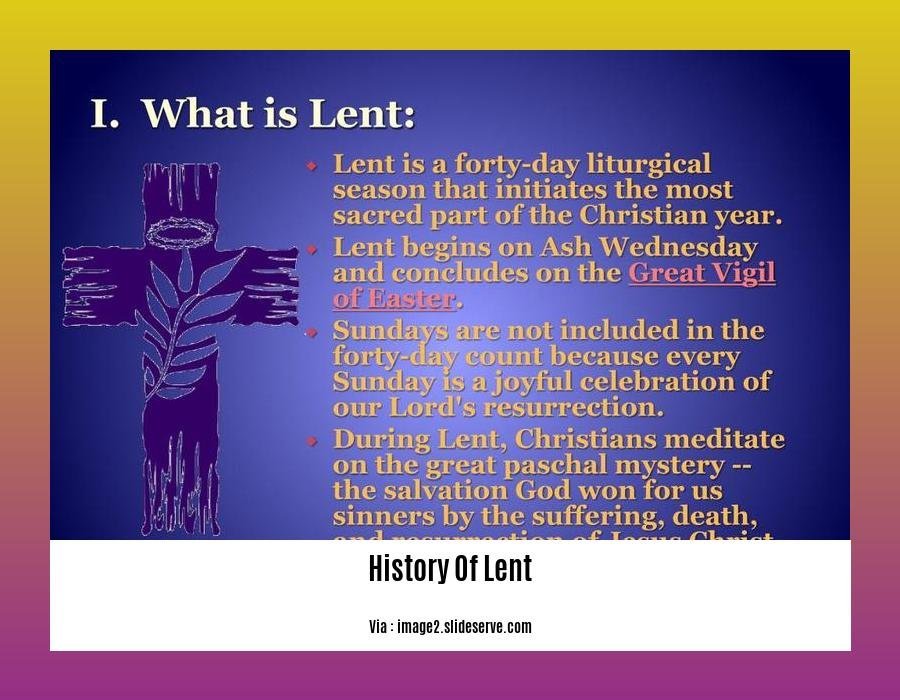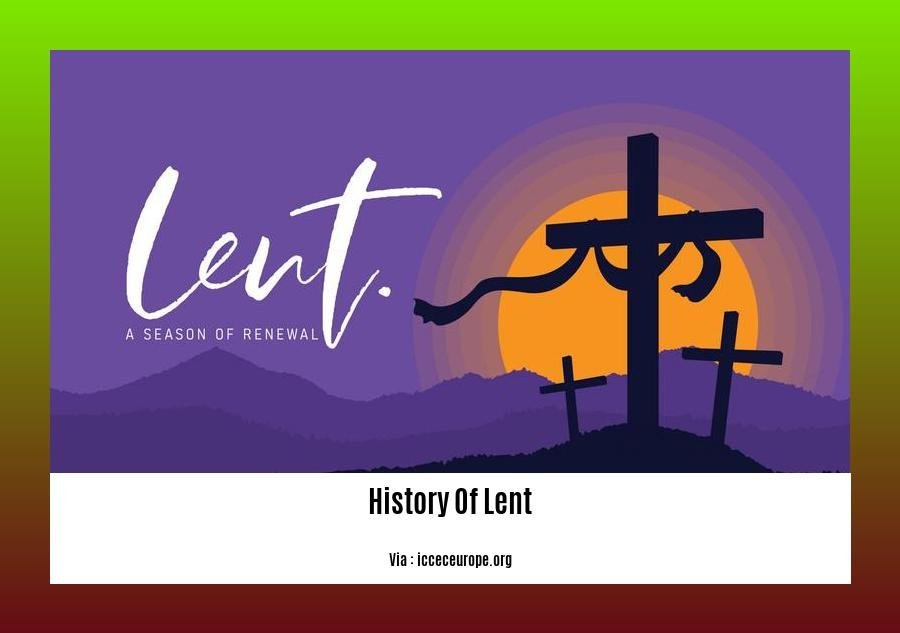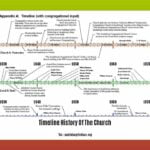Embark on a captivating journey through the annals of time as we unravel the rich history of Lent, a period of profound religious observance and cultural tradition. From its origins in early Christianity to the evolution of its practices and traditions over the centuries, delve into the fascinating world of Lent, exploring its significance in the Catholic faith, the intriguing history of lentil soup, and the cultural tapestry woven around this sacred season of reflection and renewal.
Key Takeaways:
Lent is a period of 40 days observed in preparation for Easter.
The first mention of Lent can be traced back to the Canons of Nicaea in 325 AD.
It is believed that the practice of Lent was influenced by the early church practice of baptismal candidates undergoing a 40-day fasting period before their baptism at Easter.
The beginning of Lent, known as Ash Wednesday, marks the start of this period of fasting and devotion.
Early observances of Lent emphasized fasting, with the practice of eating only one meal per day.
History of Lent

Prepare to embark on a historical expedition through Lent, a sacred period of introspection and reverence, observed for over 40 days by many Christian denominations. This journey will enlighten you on the origins, traditions, and profound significance of Lent, accompanied by intriguing facts and fascinating insights.
The Genesis of Lent
Step back in time to the early Church, where the foundation of Lent was laid. It first gained formal recognition in the year 325 during the Council of Nicaea, an assembly of Christian leaders convened by Emperor Constantine. The concept, however, finds its roots in the practice of baptismal candidates, who observed a 40-day fast leading up to their baptism during Easter.
The Significance of 40 Days
The duration of Lent, spanning 40 days, holds deep symbolic meaning. It echoes the 40 days Jesus spent fasting and praying in the wilderness, enduring temptation to fortify his spirit.
Traditions and Practices During Lent
Throughout Lent’s observance, believers engage in various practices to commemorate this solemn period:
- Fasting: Abstinence from food, either partially or entirely, serves as a means of self-denial and purification.
- Prayer: Dedicating time to prayer, meditation, and reflection, fostering a closer connection with God.
- Almsgiving: Acts of charity and generosity, sharing possessions and resources with those in need.
Lent’s Culmination in Easter
Lent is a preparatory journey, culminating in the joyous celebration of Easter, the commemoration of Jesus’ resurrection. It’s a time of reflection, renewal, and anticipation as believers prepare their hearts and minds for the ultimate triumph of Easter.
Conclusion
The history of Lent intertwines religious devotion, cultural traditions, and spiritual transformation. Through fasting, prayer, and almsgiving, believers seek to draw closer to God, cultivate self-discipline, and extend empathy towards others. Ultimately, Lent serves as a profound reminder of Jesus’ sacrifice and the redemptive power of Easter.
If you are looking for a tale that spans millennia and continents, look no further than the History Of Lentils.
History of Lenten Season

Welcome to a journey through the chronicles of Lent, a season steeped in faith, devotion, and cultural traditions. As we explore the history of Lent, we’ll uncover its origins, delve into its centuries-old significance, and trace its evolution to the cherished practices observed by Christians today.
H3. The Genesis of Lent:
In the early days of Christianity, the concept of Lent emerged as a time of introspection and preparation for the greatest celebration of the Christian faith: Easter. Drawing inspiration from the forty days Jesus spent fasting in the desert, the Church established a parallel period of spiritual reflection and self-denial leading up to Easter.
H3. A Journey of Transformation and Renewal:
The history of Lent is a story of transformation, a metamorphosis of the soul through sacrifice and self-discipline. It’s a call to embark on a spiritual odyssey, one step at a time, toward a profound communion with God.
H3. The Pillars of Lent: Fasting, Prayer, and Almsgiving:
During Lent, the faithful embrace a triad of disciplines—fasting, prayer, and almsgiving—as cornerstones of their spiritual pilgrimage. Fasting denotes a voluntary reduction in food consumption, a practice that fosters humility and strengthens the spirit. Prayer becomes a lifeline, a channel through which believers pour out their hearts to the divine. Almsgiving, the act of giving to the less fortunate, embodies compassion, reminding us of our interconnectedness as children of the same Creator.
H3. The Changing Landscape of Lent:
The observance of Lent has undergone several transformations throughout the ages. In its infancy, the Lenten fast involved abstaining from food until nightfall. Over time, this practice evolved into a period of restricting meat, dairy, and other indulgences. Ash Wednesday and Holy Week emerged as pivotal points during Lent, marking the beginning and end of this sacred season.
H3. A Call to Reflection and Growth:
Lent is not merely an obligation; it’s an invitation to delve into the depths of our being. It’s a season to confront our weaknesses, embrace humility, and connect with our spiritual core. As we navigate this journey of self-discovery, we emerge renewed, ready to celebrate the joy of Easter with hearts brimming with faith and gratitude.
Key Takeaways:
Lent is a 40-day period of spiritual reflection, self-denial, and preparation for Easter, commemorating Jesus’ 40 days in the desert.
The observance of Lent is characterized by fasting, prayer, and almsgiving, fostering humility, spiritual strength, and compassion.
Throughout history, the practices associated with Lent have evolved, reflecting the changing cultural and spiritual contexts.
Lent is a call to introspection, self-awareness, and spiritual transformation, urging us to connect with our faith and embrace humility.
Relevant URL Sources:
- What Is Lent and Why Do Christians Celebrate It?
- Why Christians Give Up Things for Lent
FAQ
Q1: What is the historical significance of Lent in Catholicism?
A1: The observance of Lent in Catholicism dates back to the early centuries of Christianity. The first official mention of Lent is found in the Canons of Nicaea in AD 325, which established a period of 40 days of fasting prior to Easter. This practice was influenced by the early church practice of baptismal candidates undergoing a 40-day period of fasting and preparation before their baptism at Easter.
Q2: How did the tradition of eating lentil soup originate during Lent?
A2: The tradition of eating lentil soup during Lent is associated with the concept of fasting and simplicity. Lentils are a symbol of humility and were commonly consumed during Lent as a simple and nutritious meal. The practice of eating lentil soup became popular in some cultures as a way to adhere to the fasting requirements while still maintaining sustenance.
Q3: When did the Lenten season become widely observed by Christians?
A3: The observance of the Lenten season gradually became more widespread among Christians over time. In the 6th century, Pope Gregory I formalized the 40-day period of Lent and established the practice of fasting from meat and animal products on weekdays. The Lenten season became firmly rooted in the Catholic tradition and later spread to other Christian denominations.
Q4: What is the significance of the number 40 in relation to Lent?
A4: The number 40 holds symbolic and spiritual significance in the Christian tradition. It is mentioned in several biblical accounts, including the 40 days that Jesus spent fasting in the desert and the 40 years the Israelites spent wandering in the desert. The 40 days of Lent represent a period of spiritual preparation and reflection in anticipation of Easter.
Q5: How has the Lenten season evolved over time?
A5: The Lenten season has undergone various changes and adaptations throughout history. While the core elements of fasting, prayer, and almsgiving have remained, the specific practices and traditions associated with Lent have varied across different cultures and time periods. In recent decades, there has been a renewed emphasis on the spiritual aspects of Lent, focusing on repentance, self-reflection, and a deeper connection with God.
- China II Review: Delicious Food & Speedy Service - April 17, 2025
- Understand Virginia’s Flag: History & Debate - April 17, 2025
- Explore Long Island’s Map: Unique Regions & Insights - April 17, 2025
















